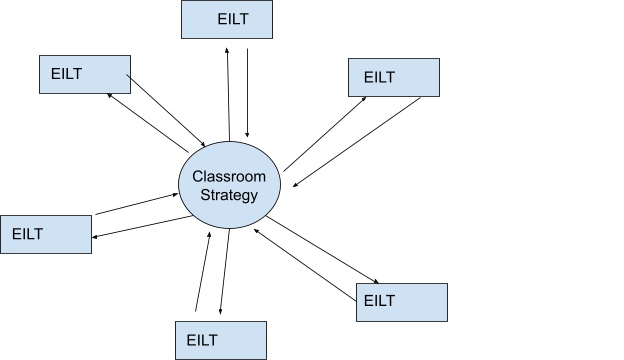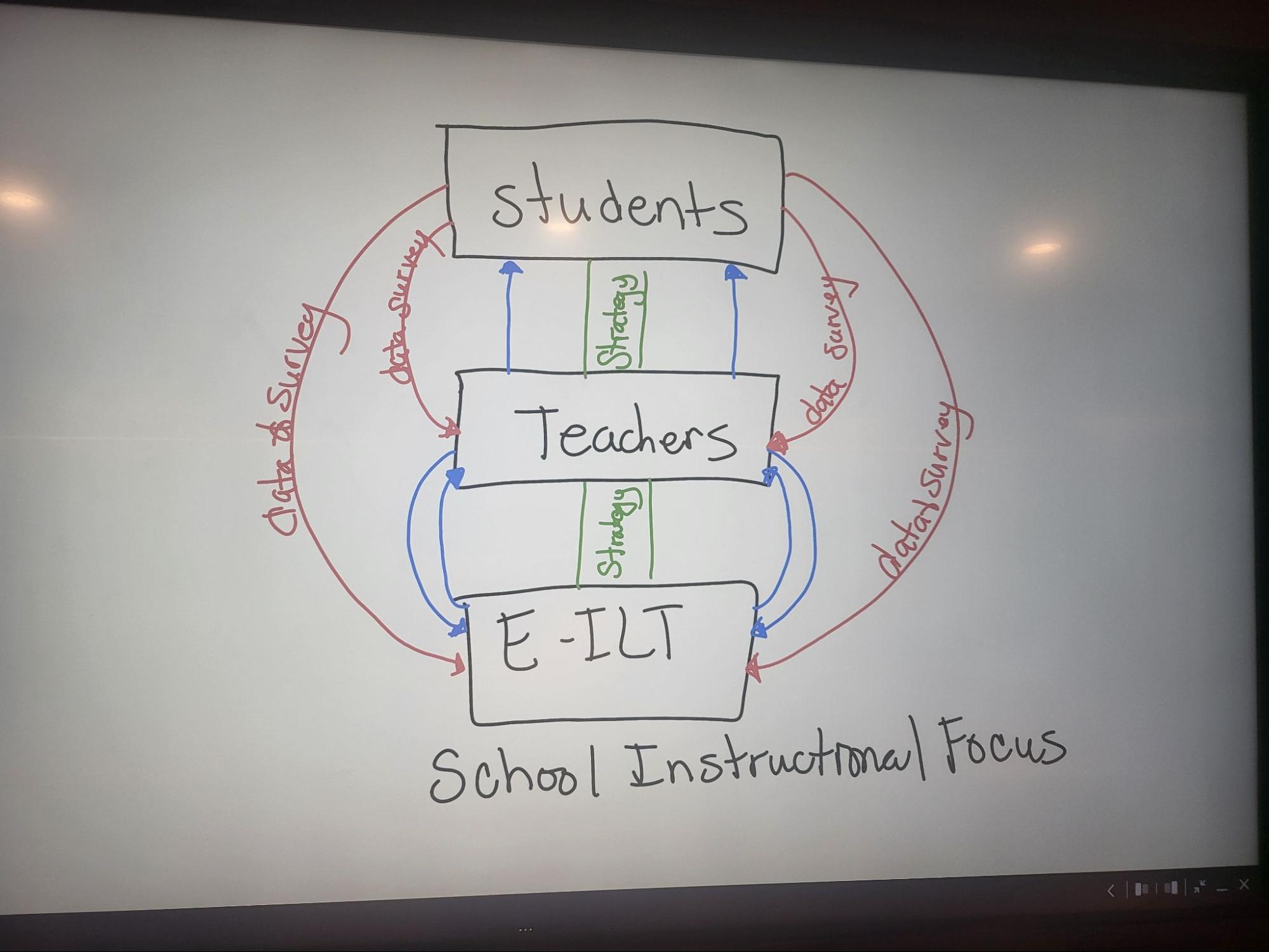
Most schools adopt instructional strategies that are culturally inclusive and research based to lead to improved test scores for students. When classroom instruction occurs, evaluators are examining instruction to determine teacher effectiveness but rarely look at the specific instructional strategies being used. Our school in Brooklyn, New York, began to look at this system of evaluation within our Equity Instructional Leadership Team (EILT)—a team of individuals in the school who are leaders in their content area alongside administrators. We decided to use assessment data to evaluate specific instructional strategies and their effectiveness. These strategies were mandated for the entire school and were our instructional focus for the school year.
During this same time I was introduced to Feedback loops, defined as an interaction between two or more parties that is purposeful, bidirectional, and iterative and transforms the knowledge, actions, or goals of the engaged parties. The term was familiar, but I did not have a true understanding of its meaning or power until I began to use it to examine how our team functioned, and to evaluate instructional strategies. There is power in the meaning.
Using this knowledge, I first evaluated the way our team worked during the first round of this process. We examined benchmark test scores among different classes and then took into account the teacher of that subject to determine if the strategy was effective. According to feedback loops, we really should include educators in the conversation. As a team, we were really just giving our opinions based on research and data.
Educators were now included in our evaluation process, and they provided us with feedback regarding the success and challenges of these strategies. A bonus to including educators in the process was the knowledge we gained to better support them with professional development. We now had input from educators to add to the evaluation criteria, but a further look into how feedback loops work indicated that something was missing.
After reading through the Digital Promise publication on feedback loops again, I decided to complete a sketch. (Visuals make me happy.) Even though arrows were present in different directions, something was missing.

Sketch of how feedback was flowing during instructional strategy evaluations.
I discussed my sketch with the EILT team and together we brainstormed and determined that students should also be in the loop—no pun intended. We collaborated to create a sketch of what we wanted our feedback loop to look like if it were a true feedback loop.

Representation of what we want our feedback loop to look like.
Using this diagram, we were able to formulate next steps that included asking students to complete a survey that was specific to the instructional strategy being examined, and also providing students with their own data to begin tracking and providing feedback of their own. We also used it to set goals for the next benchmark which involved having students set their own goals as well as teachers, providing professional learning to educators, and making changes to the instructional strategies used to meet the needs of our students.
Feedback loops were the driving force behind improving the way we communicate as a team and evaluating the use of instructional strategies in the classroom. It taught us not to be one directional in our vision, but rather to obtain a holistic view of instruction in our classrooms. As a school, we use feedback loops to design how to evaluate programs, as well as within other teams in our school. It is an essential part of what makes our systems work and improves the academic performance of our students.
Want to know more about feedback loops? Find resources at: